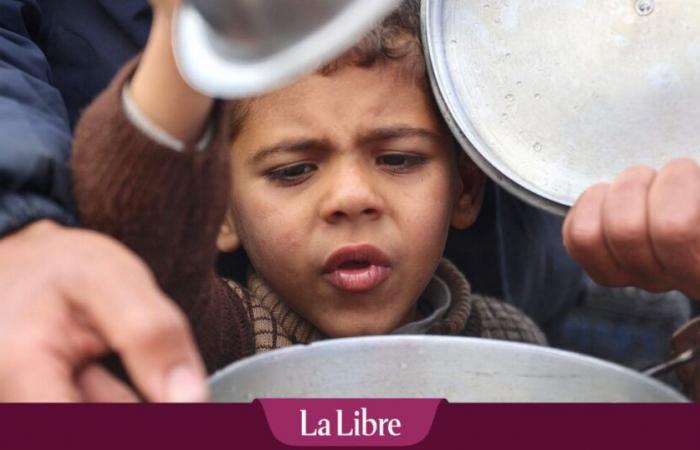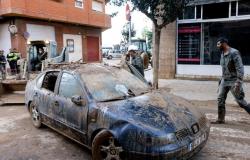Presented Monday before the United Nations General Assembly, the report emphasizes that the obligations of international law “are endangered by Israel’s abuses“and the military support provided by”other states“. He concludes that all the data analyzed “present characteristic elements of a genocide” in Gaza. In total, at least 43,985 Palestinians have died in the enclave since the start of the conflict, according to estimates by the Hamas Ministry of Health.
Starvation as a weapon of war
According to the latest United Nations reports, around 90% of Gaza’s population, or nearly 2 million people, are affected by food insecurity. While humanitarian convoys struggle to reach the enclave (the north of which is now prohibited from access), the partial blockade imposed by the Israelis resembles a “collective punishment and retaliation” against the Palestinians, denounces the report.
The majority of the intramural food system was destroyed by Israeli bombing. While agriculture represented between 20% to 30% of Gazans’ daily consumption before the conflict, nearly two thirds of cultivated land had already been damaged by mid-July. This use of starvation “as a weapon of war“will impact the population”for decades, with children particularly likely to suffer“.
In the West Bank, an “economic war” is playing out between Israel and the Palestinian Authority: “Like Gaza, the region is also under Israeli blockade”
In the West Bank too, a “significant decline” of agricultural production and the economic collapse of the sector increased exposure to food insecurity by around 42% in the month following the start of the conflict. In total, almost 32% of agricultural jobs were lost , depriving households already experiencing numerous financial difficulties of a source of income.
Environment at risk
On the occupied Syrian Golan, the increase in Israeli settlements (currently around 35) threatens the inhabitants’ agricultural livelihoods. The development of settlers’ economic activities also presents environmental risks. Led by the private Israeli company Energix Renewable Energies Ltd, a wind farm project could drastically limit the population’s access to land and water, and force residents to settle in heavily populated areas. According to the report, “these measures are part of Israeli policy aimed at doubling the number of settlers in the occupied Syrian Golan by 2027“.
Palestinian journalists have paid a heavy price since October 7
Israeli authorities also destroyed around 1,467 properties belonging to Palestinians in the West Bank, causing the displacement of some 3,566 residents, according to the latest UN figures dated November 18. The diversion of natural resources for the benefit of increasing colonization”continues to degrade the environment and severely restrict access to food and clean water” of the local population, denounces the report.
Within the Palestinian enclave, the “right to a clean, healthy and sustainable environment” is also in danger. Major water, energy and agricultural infrastructures, as well as environmental management systems, have been considerably damaged. In May, some 38 million tonnes of debris had already been produced by Israeli bombings, thirteen times more than the total debris produced during all other conflicts in Gaza since 2008. These “irreversible damage“natural ecosystems will also impact future generations:”It will take around 45 years to recycle just half of the debris“, according to the UN Committee.






